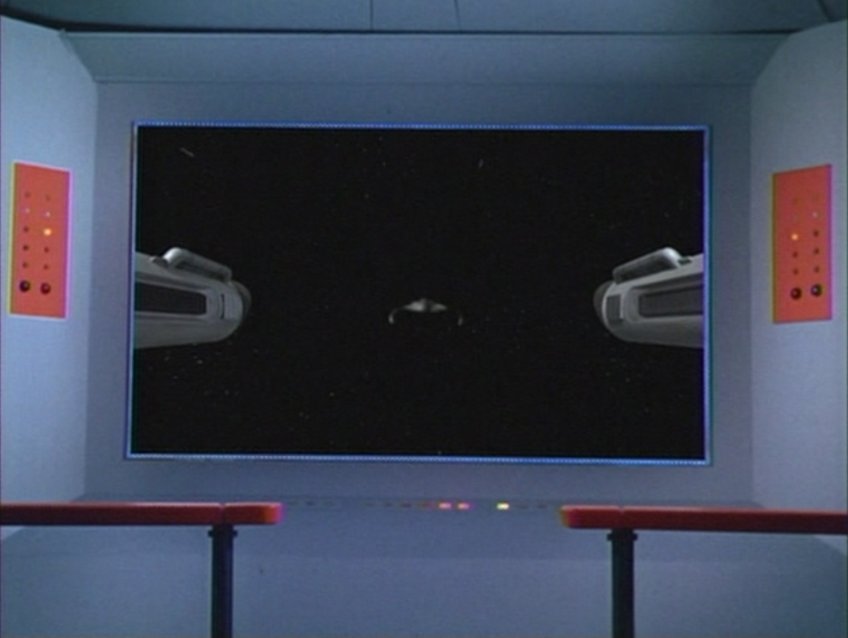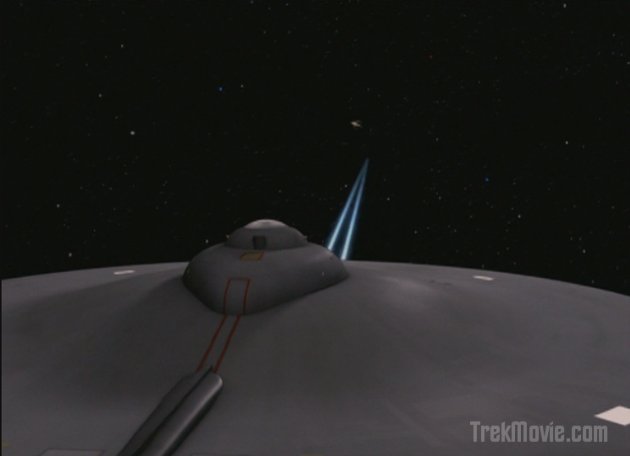Commenter "International Man of Mystery" requested information about my departure from SpaceBattles in comments to the last post.
As that was a mere
four and a half years ago, and as SpaceBattles cannot be googled going back that far, I wasn't thinking I'd find much.
But I did. So now, as usual, far too much information:
For starters, a little backstory.
Then, as now, SpaceBattles had a strong cross-pollenation with our old friends at StarDestroyer.Net's forums, meaning that the vitriolic anti-Trek contingent was well-represented. It was, though, a much different environment. First, the overall noise level of so many universes being pitted against one another left Trek vs. Wars discussions a mere drop in the rainstorm. And, there were pro-Trek folks there to a larger degree than one would find at SDN, though without the unity of SDN's spin campaigns.
The natural result of this was naturally that I, the Great Satan (tm), would be piled upon as usual, albeit with the occasional kudo to break up the monotony.
One SDN/SB border-hopper was SpaceBattles mod "H.B.M.C.", who was more than happy to use executive authority in support of his most favored franchise of Star Wars. I naturally found this quite annoying, and my resulting failure to kow-tow led to a tangle or two. Or
three.
And there was much to discuss then. This was the era during which the dual canon idea was still relatively fresh, while at the same time the other side was subverting their minds to the ICS children's books as the end-all be-all of Star Wars fact, widening the gap between myself and the other side as they devolved into selective EU worship at the expense of the Star Wars of Lucas. And the other side felt they had the upper hand at the time, as previously pro-Trek poster Alyeska, in an obvious social play, chose to
publicly concede to the aforementioned children's books. This was spun as an objective repudiation of any who failed to toe the opposition's party line.
As I had never been one to try to socialize with my ever so ill-mannered opponents, I'd never had need to try to get in their good graces.
Alyeska had already done so, cozying up to the opposition to the point that, as a classic "useful idiot", he was even granted a small moderation position at SDN. His final choice to abandon reason in favor of community was, as he undoubtedly expected, lauded and further rewarded by the opposition, though after his usefulness ended there was a
bitter falling out.
At one point, I'd asked another mod with pro-Trek leanings on how best to get HBMC off my back. The fellow noted that HBMC had gotten in trouble for that sort of thing more than once already. A portion of his response . . . quoted here under the presumption that any statute of limitations has run out . . . was as follows:
"I wish I could give you some advice... but HBMC's a tough case. He's been around here much longer than I have, but after a few years, there's a few things I've come to understand about him...
He hates Star Trek, in all incarnations, and considers Star Wars to be practically a masterpiece, instead of the derivative pulp work it frankly is. He does, however, have interests outside of Trek, so it couldn't hurt to find some common ground.
I don't know how often you intend to hang around here, but it certainly could only get better if you visit some of the other forums. {...} Remember, every time you've posted here so far, that I can recall, it has been in a Trek/Wars debate of some kind or other, and you make some very strong arguments against his position, which psychs the hell out of him. So he gets a ten foot pole up his ass the minute he spots your name on the board.
{...} That'd be my best advice. Hang around a bit more, get to know some of the other people... get involved in different forums, and debates about *other* SF universes, and I practically garauntee he'll either shut up voluntarily, or the rest of the people on the board will tell him to."
The fellow's basic advice was to socialize with HBMC -- make friendly with him and/or others.
There was logic to that. However, I'm not involved in this hobby to make friends. I'm in it to establish and support facts on the topic (such as one can have facts regarding fiction, but you know what I mean). Any interest I might've entertained in revealing myself further became extinct the first time such conversations became used by the opposition as ammunition for personal harassment and death threats. (This gives people the impression that I am extraordinarily single-minded on this one topic, with nothing else in life. I'm quite comfortable giving off that impression, given the unpleasant alternative.)
In short, as a rule of thumb, if I want to socialize with people I don't do it with faraway strangers from the internet. And so in regards to HBMC, the advice to socialize fell on deaf ears. My sole interest in SpaceBattles was for the sole purpose of Star Trek vs. Star Wars fact-finding. All else was irrelevant, meaning that, unlike Alyeska, I was completely unconcerned with the opinion others held about me on a personal level.
My only concern with HBMC was that he was interfering in fact-finding. He had what I considered a 'unique' concept of what topics to close and when . . . always seeming to correspond to that which most benefitted the pro-Wars mythology camp of which he was a part. His trolling of threads, support of trolling of me, and abuse of moderator authority were mucking with my goals.
Perhaps some of the most entertaining bits were his calls for
invasion of the board he moderated, so as to try to wear me down and drown me out.
"It brings me great pain to do this...
But I am at my wit's end with DarkStar. Thanks be to Alyeska for doing what he has done, but it has made DipShit even more unbearable than ever.
I come here only because no one else will, and because I'm a mod in the VS forum who has his hands tied.
Anyone who can help deal with DarkStar over there is welcome, and I implore someone to help."
-http://bbs.stardestroyer.net/viewtopic.php?p=514645
"Are we totally sure that no one wants to pop over and pitch in? A few descenting voices would be nice, and as long as they're not outright attacking him all help (not that we need any, but it's fun to watch him squirm when he has 6... 7... 8 ... 9 people against him at once) would be greatly appreciated."
-http://bbs.stardestroyer.net/viewtopic.php?p=524181
"We're getting no-where at Spacebattles and we're sick of his posts.
Worst of all, I can't actually ban him for any real reason as he's done nothing wrong either."
-http://bbs.stardestroyer.net/viewtopic.php?p=258675
Of course the invasion requests included the "not outright attacking him" yarn, but merely for cover . . . a total flame-invasion would've drawn the attention of other mods, whereas the usual SDN tone of flaming with an admixture of non-flame words would at least give the appearance of heated debate instead of mere nonsensical personal attacks.
In any case, it was against this entire backdrop that Wayne Poe, using one of his multiple accounts at SpaceBattles, chose to
repost his "Trekmiss" video (newer version
here). In it, Poe had culled examples of misses by Trek vessels, put them to funny Benny Hill music, and thus crafted a small, fuzzy, low-logic video which purported to show that Star Trek starship weapon accuracy was crappy. As one thread participant put it, "Blind retarded monkeys would make better gunners than Trek targeting computers! That display of accuracy is absolutely PATHETIC! At least Star Wars turrets hit their targets more than 1 out of 10 shots."
To my mind, the most efficient response was to
respond in kind with a parody video mocking Wayne's unintentional parody. Thus I culled examples of misses by Star Wars vessels, put them to the music of the Cantina band, and thus crafted a small, fuzzy, low-logic
video that purported to remind Star Wars fanboys not to get too haughty in their anti-Trek glee.
I considered it tit for tat, a suitable negation of Wayne's silliness. I certainly see nothing wrong with the tactic. Why would I? Applying your opponent's own irrational attack pattern to your opponent's preference in order to make a point is hardly dishonorable. Turnabout, after all, is fair play.
Imagine my (lack of) surprise when H.B.M.C. came along and closed the thread and removed the video link, calling the whole thing "petty, childish and immature flamebait" compared to Wayne's "harmless fun".
But the idea that I had posted flamebait was silly. It's
me we're talking about here, the GREAT SATAN(tm) . . . the fact that I posted
at all was flamebait, including for HBMC. More specifically, though, I was annoyed at the obvious double-standards.
And that's the real crux of the matter. The situation was basically that a pro-Wars mod/troll and his fellow pro-Wars members, invasion-buddies, and trolls could not be expected to behave with civility when their opinions were challenged. I, meanwhile, was expected to be respectful of their failings in that regard while peacefully and happily accepting all their challenges and insults to my opinions and person. If I failed to do so, thereby producing flaming from them, I was considered the troublemaker.
If such a consequentialist view is how one wants one's board run, that's fine . . . just be honest about it. The annoying part is when that's done at the same time as the pretense of fairness and justice is maintained.
HBMC sent attacks via PM and I replied forcefully. Seeing that HBMC was rendering SpaceBattles useless to me, I decided to lodge a formal complaint. There was little chance of a good result, but if I was to be made to go I had no desire to go silently.
And indeed, I later learned I was banned. Since HBMC was already effectively interfering with and closing (i.e. banning) discussion, this hardly changed anything. (And according to
reports, this still goes on.)
The end result was that, alongside the SDN ban, I had another badge of honor, and more proof that the pro-Wars side cannot take the real heat . . . they can only flame.















